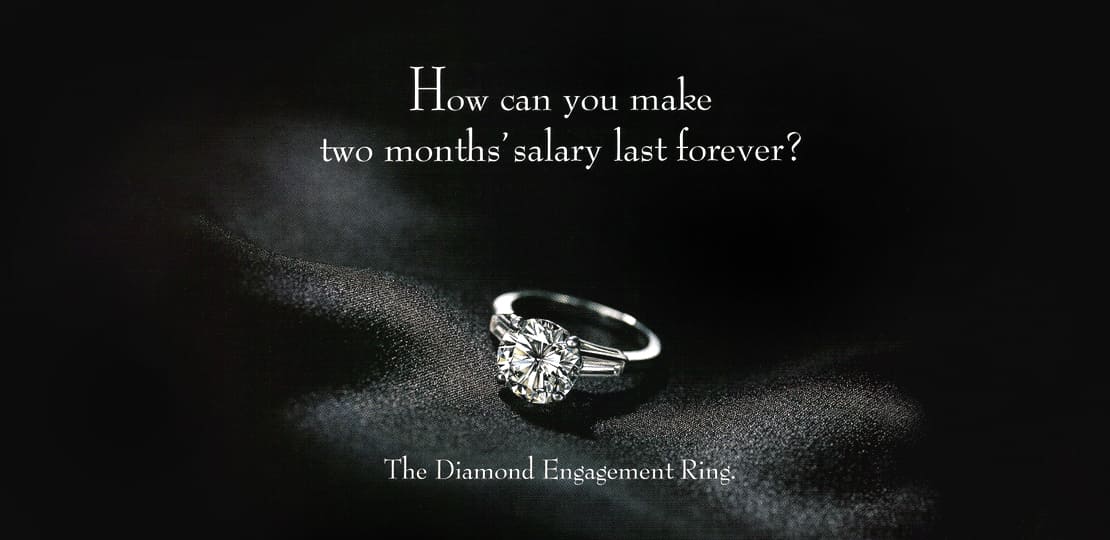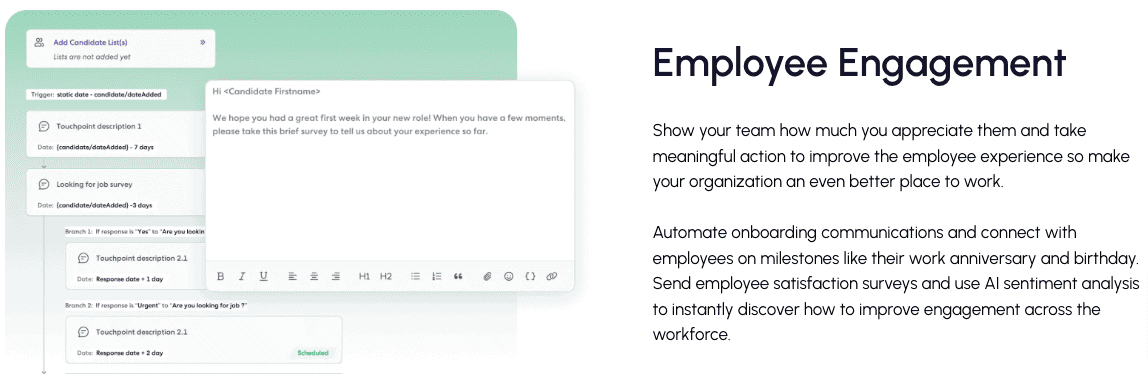Want to make your brand’s message pop and rise above the noise?
These great copywriting examples will show you how. Effective copywriting isn’t just about putting words on a page—it’s about telling compelling stories that hook people, spark emotions, and get them to take action.
As you flip through a magazine or browse a website, good copy grabs your attention and nudges you to act. That makes copywriting so powerful for brands—the key to creating a lasting impression that keeps customers returning.
Think about it—when you’re casually scrolling through a brand’s website or thumbing through a magazine, aren’t there certain lines or headlines that grab you and make you stop for a second? That’s great copywriting, creating that personal moment that just clicks.
Copywriting isn’t just words—it’s the art of storytelling, connecting emotionally, and getting people to do something, whether clicking a button, signing up, or making a purchase. It’s what helps brands get noticed, build loyalty, and grow.
Let’s dive into some real-life copywriting examples that can inspire your business and take your marketing to the next level.
Table of Contents
Key Takeaways
- Great copywriting is about telling a story that makes readers care, act, and remember your brand.
- A strong emotional connection is essential—learn to speak directly to your audience through every word.
- Clarity is powerful—see examples of how simple, jargon-free copy makes a lasting impact.
- Effective calls to action move people—discover how to craft CTAs that drive results.
- Consistency across all platforms builds trust—learn why maintaining the same voice matters to your brand’s success.
What Makes Great Copywriting Stand Out?
The best copywriting isn’t just about words—it’s all about inspiring action. Whether you want your consumers to sign up for your newsletter, buy a product, or book a demo, great copy persuades your audience to take the next step.
Let’s break down what sets great copy apart from the rest:
Clarity
Great copies are crystal clear. They’re easy to understand, avoid jargon, and get to the point quickly. Your audience should instantly know what you’re offering and why it matters to them. Instead of overcomplicating your copy, use simple, direct language that resonates with your audience.
Engagement
Your copy should grab attention right away—it needs to “sizzle.” Great copy reads like a direct conversation with your audience, drawing them in from the first word.
It’s relatable and builds a connection, making readers want to keep going.
Persuasion
Great copywriting always has a persuasive edge—it doesn’t just inform; it convinces. A persuasive copy doesn’t just inform; it convinces.
It uses compelling techniques to appeal to readers’ emotions and logic, addressing their fears, desires, and needs.
Ability to evoke action
The ultimate aim of copywriting is to evoke action. Whether the goal is for a reader to subscribe to a service, make a purchase, or simply click a link. Your copy must hit the mark, creating urgency and inspiring readers to act immediately.
Create a sense of urgency and compel them to take action by including a clear CTA that guides the reader toward the desired response. For example, CTAs like ‘Get Started Now’ or ‘Claim Your Free Trial’ create urgency and guide readers toward action.
Tip: Strong CTAs can make all the difference—guide your audience clearly to the next step.
Read also: 5 Awesome Promotional Email Examples From Top Brands
Analyzing Great Copywriting Examples
Here are some great copywriting examples from which you can take inspiration.
1. De Beers: “A diamond is forever”

In 1947, De Beers launched its iconic campaign with the slogan “A Diamond is Forever,” changing how people perceived diamonds. Before this, diamonds weren’t always the go-to choice for engagements.
The question, “How can you make two months’ salary last forever?” effectively struck an emotional chord with the middle class, convincing them that diamonds represented lasting love and commitment.
This campaign turned diamonds into an enduring symbol of love and exclusivity.
2. Sense website copy

Great website copy should feel seamless—not like a sales pitch. Sense’s website copy nails it by communicating its message swiftly and clearly, keeping visitors interested without overwhelming them.
The copy emphasizes ease of use and benefits, making it approachable and informative without diving into overly technical language. Think of it as a digital charm that converts casual visitors into loyal users through simplicity and precision.
Read also: 10 Ad Copy Examples That Are So Good, It Hurts!
Elements of Successful Copywriting
Here are some best practices to follow for successful copywriting.
Know your audience inside out
Understand your audience’s concerns, pain points, desires, and preferences. This helps you relate with them. Always conduct thorough research to guide your copy towards the audience.
Clearly articulate what sets your product/service apart
Every product and service is unique, and great copywriting helps it stand out. In a crowded market, businesses often go unnoticed. To position yourself effectively, you must clearly articulate why customers should choose you.
Weave a narrative that captivates and connects
Another key element of successful copywriting is weaving a compelling narrative.
By using persuasive language and highlighting the benefits of your product or service, you can create an emotional connection with the consumer. This connection encourages them to take the desired action.
Maintain a consistent tone and voice
A solid and consistent tone and voice are essential in creating a strong brand identity and building trust with your audience.
The tone could be playful, professional, authoritative, or friendly, maintaining this tone across all your content.
Great copy doesn’t come off the first draft
Good things take time, and so does creating compelling copy. You need to continuously iterate and look for possible improvements, but don’t edit your copy to the point where it sounds lifeless.
Craft multiple versions, seek feedback, and refine until your message is clear, compelling, and on-brand.
Read also: 12 Best AI Copywriting Tools in 2024 to Save You Hours Everyday
How to Craft Great Copywriting Examples
Creating catchy copy requires effort to determine what will grab your audience’s attention. It’s equally important to evaluate its effectiveness.
This guide breaks down the process into actionable steps to help you create compelling copy.
- Research your audience. Know who they are, what they want, and what you can offer them. Understand them through their demographics, psychographics, needs, and preferences.
- Create a strong headline because it’s the first thing people see. An engaging headline could be a dealbreaker for your product or service, so it needs to grab attention. Make it clear, compelling, and relevant to the content that follows.
- Focus on benefits, not features, as benefits are what attract the audience. Consumers care more about how a product or service benefits them rather than its features. Provide your consumers with a solution to their problems.
- Use persuasive language that should deliver the message loud and clear. Employ persuasive techniques such as social proof, scarcity, and urgency. Words like “free,” “exclusive,” “limited time,” and “guaranteed” can motivate readers to act.
- Include a clear call-to-action (CTA) to help your customers know how to act. Whether it’s signing up for a newsletter, making a purchase, or downloading a resource, make sure it’s evident and persuasive.
- Tell a story that connects people to your brand. Use storytelling to make your content more engaging and relatable. Share testimonials, case studies, and anecdotes to illustrate your points.
- Edit and refine your copy to make it ready to reach your customers. Seek feedback from others and make iterative improvements.
- Test and optimize your copy to see what works best. Use analytics to track performance and make data-driven adjustments.
Read also: Email Copywriting 101: Tips to Craft High-Converting Email Copy
How Great Copywriting Examples Can Boost Business Success
The rules of engagement are constantly shifting, demanding a new perspective. Businesses need to adapt to these rapid changes, embrace fresh perspectives, and iterate their copy accordingly.
Let’s explore how businesses can leverage great copywriting to stay ahead of the game.
Position your brand’s identity
A consistent and compelling copy aligning with the brand’s tone and voice helps establish a brand’s identity. It positions trust, and the business gets recognized through its string copywriting across all communication channels.
This way, brands build a lasting connection with the audience.
Improve engagement and conversion rates
A clean copy quickly captures the audience’s attention and connects them with your brand.
Whether through social media posts, email campaigns, or website content. Effective copywriting can drive higher levels of conversion rates and encourage interaction.
Boost SEO and online presence
Integrating relevant keywords with high-quality content will help your copy reach the targeted audience.
Effective copywriting not only attracts and retains readers but also enhances visibility on search engines. It drives more organic traffic to the website.
Build customer trust and loyalty
Transparent and authentic copy helps you form trust with the audience.
Stay true to your information, establish credibility, and build long-term relationships with your customers.
Adapt to market trends
Great copywriting is not static; it evolves with market trends and consumer preferences. It is constantly updated with the latest industry trends and adapting copy strategies accordingly.
This way, businesses can remain relevant and continue to meet the changing needs of their audience.
Read also: What Is an Email Conversion Rate? Examples and Tips (2025)
Conclusion
Copywriting isn’t mysterious art—it’s about connecting with people, making them feel something, and nudging them to take action. You don’t need fancy words or jargon; you just need to be real.
Whether you’re tweaking your brand’s personality, trying to rank better on Google, or adjusting your message to fit the latest trends, great copy is always about evolving and experimenting.
The best copywriters are storytellers who know how to make their audience feel understood through humor, honesty, or something personal.
So, jump in, write, test, tweak, and repeat.
The more you do it, the more your brand will start to stand out, win over your audience, and keep them coming back. Want to see real results? Try out these techniques, keep things simple, and watch your engagement grow.
EngageBay is an all-in-one marketing, sales, and customer support software for small businesses, startups, and solopreneurs. You get email marketing, marketing automation, landing page and email templates, segmentation and personalization, sales pipelines, live chat, and more.
Sign up for free with EngageBay or book a demo with our experts.
FAQ
What is the difference between good and great copywriting?
Good copywriting gets the job done. It conveys the message clearly and crisply. On the other hand, great copywriting connects with the audience to the core. It forms an emotional connection with the audience, compelling them to take action.
Great copywriting is simply great because it transforms a simple message into an engaging narrative that resonates deeply with the audience. It tells a story, evokes emotions, and stands out in the reader’s mind long after they have read it.
How do I know if my copywriting works?
You know, copywriting does its job when it achieves its intended purpose. Take a look at metrics and analyze conversion rates, click-through rates, and engagement levels. Ask for qualitative feedback from your audience.
Get to know their thoughts and pay attention to comments and reviews. If your copy is resonating with them, you’re on the right track.
How much should I focus on SEO in my copywriting?
Copywriters often get confused about how they should utilize SEO in their copywriting. SEO is crucial, but it shouldn’t overshadow the quality of your content. The primary goal of your copy should remain to engage and inform your audience.
Once you have compelling content, optimize it for search engines by including relevant keywords, meta descriptions, and headers. Balance is key; create content for humans first, then tweak it for search engines.
What are the most common copywriting mistakes to avoid?
Not paying attention to the audience: Focusing solely on your brand misses the mark. Make your copy conversational and audience-centric.
Being too generic: Generic copy lacks impact and fails to stand out. Personalize your message to reflect your brand’s unique voice and your audience’s specific interests.
Using repetitive jargon: Overloading your copy with repetitive jargon can alienate and confuse readers. Technical terms and industry-specific language might be necessary at times, but excessive use can make your message seem inaccessible and tedious.
Pushing too much on features: Just listing features doesn’t convey the total value. Highlight how these features translate into tangible benefits for the reader.
Failing to test and optimize: Assuming your first draft is perfect can be a mistake. Continuously test different versions of your copy, analyze performance metrics, and refine based on what works best.
Ignoring CTAs: Failing to put adequate effort into crafting a compelling CTA can render even the best copy ineffective. A strong CTA guides readers toward the next step and converts interest into action.
How do I balance creativity with selling my copy?
Hence, immerse yourself in your customers’ perspectives when crafting great copy. Creativity isn’t about writing for yourself or forcing ideas. Instead, seek inspiration from various sources to infuse your copy with genuine creativity and relevance.
Should my copywriting vary across different marketing channels?
Copywriting strategies differ depending on the platform. Each platform attracts a distinct audience with unique preferences and behaviors. Don’t use a one-size-fits-all approach; customize your message to fit the platform, and you can significantly enhance engagement and effectiveness.
How often should I update my copywriting to keep it fresh?
Update your copywriting as per changes in trends. Aim to refresh your copy every few months or as often as your audience’s preferences. This keeps your content relevant and engaging.
Can storytelling make a difference in copywriting?
By weaving a narrative and turn into your content, you turn dry facts into engaging, memorable experiences. Stories tap into emotions and humanize your brand, making your message heard and felt.
Storytelling brings life into your content and keeps readers hooked till the end.
